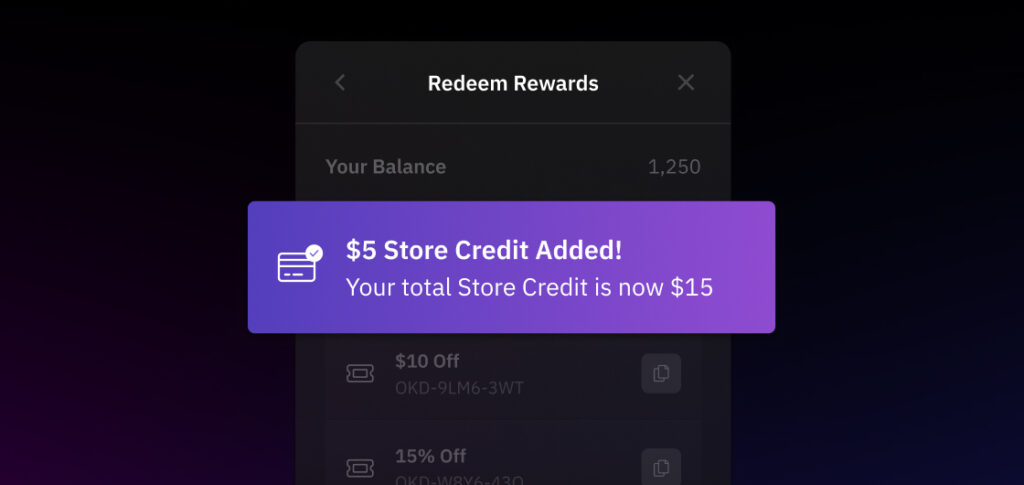
- Customer Loyalty
- Loyalty
- Product
Simplify reward redemption with Store Credit
Katie Vaught | Apr 22, 2025
Oct 24, 2023 | 9 minute read
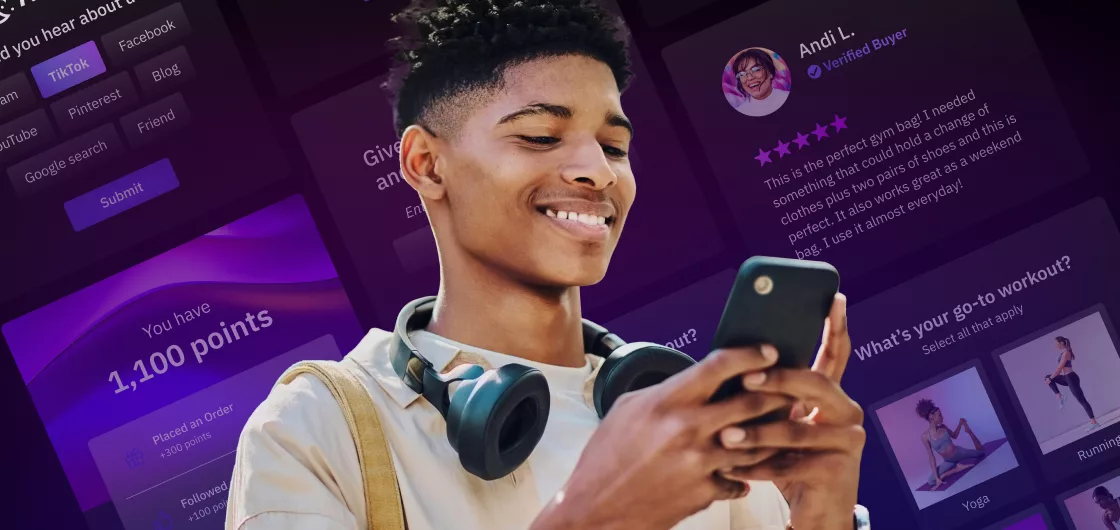
Megan Wenzl
Content Marketing Manager
In an age of fleeting digital interactions, nurturing unwavering customer loyalty is no longer just a “nice-to-have,” but an absolute imperative. Today’s consumer is presented with an endless amount of choices, with countless brands offering similar products and services. So how do brands differentiate themselves in this environment?
The key lies in fostering deep-rooted brand loyalty.
As businesses pivot from solely focusing on customer acquisition to prioritizing retention, understanding the elements that contribute to loyalty becomes crucial. Let’s dive into six actionable strategies every brand can start using today to build customer loyalty.
At a time when choices are plentiful and attention spans are short, guiding customers to products that resonate with their needs is critical. Quizzes have become a powerful tool, linking customer preferences with tailored product suggestions.
Consumers want experiences that feel tailored to their unique needs and preferences. By offering guided shopping experiences through quizzes, brands can not only meet, but surpass these expectations, building customer loyalty and driving conversions.
In fact, our recent loyalty and retention research underscores this trend: 58% of consumers highlighted quizzes as a pivotal factor that exceeded their online shopping expectations, further cementing their allegiance to the brand.
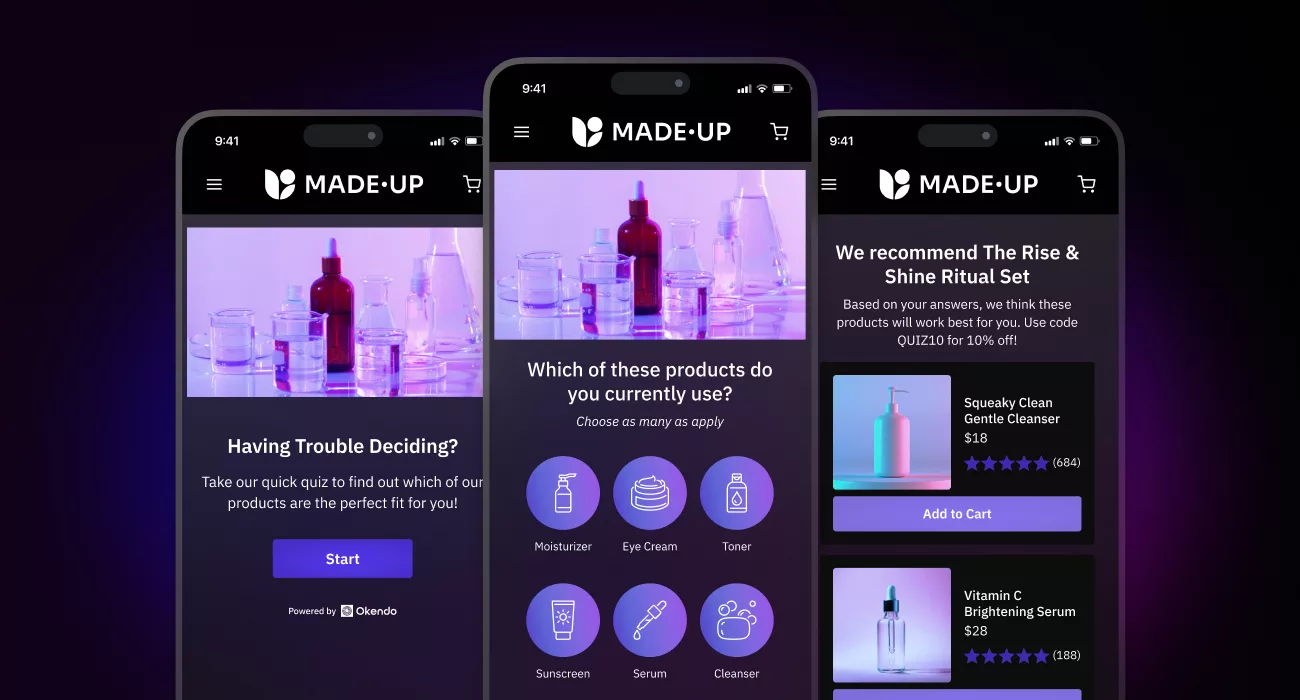
Through a series of strategically crafted questions, product recommendation quizzes allow customers to share a wealth of information, from preferences, behaviors, requirements, and even demographics. With this insight in hand, brands can use Okendo to provide customers with product recommendations meticulously aligned to their needs. As a result, shoppers feel understood, valued, and more inclined to make a purchase, knowing that the recommendations are tailored to their specifications.
Few things are as important to brand success as establishing authenticity and trust. One key way to build this trust is through genuine reviews. By inviting clients to voice their experiences, brands not only bolster their credibility, but also enhance the experiences that customers have with them.
For example, Okendo customer Feastables implemented a go-to-market market strategy for the launch of their product, Deez Nuts. Yet, they felt a gap in understanding customer sentiment. By utilizing Okendo Reviews, Feastables could swiftly grasp customer feedback, especially with incentivized video reviews.
This approach led to a substantial 433% rise in conversions. In addition, with Okendo Surveys, Feastables gained an even greater understanding of the way customers felt about their new product. Feastables also gained the clarity on where to concentrate their marketing efforts, discovering the majority of their customers originate from YouTube by utilizing a HDYHAU survey.
In today’s customer-centric world, brands must prioritize and elevate the customer experience to build and maintain customer loyalty. Focusing solely on the product, and not the experience surrounding it, is a misstep that can cost dearly in terms of customer loyalty.
As our research on loyalty and retention found, “A bad customer experience that wasn’t adequately resolved by customer support” ranks as the second most significant deterrent for customers, pushing them away from repeat purchases and even compelling them to explore alternative brands.
To genuinely focus on the customer experience, brands must actively listen. Zero-party data (ZPD), obtained from reviews, surveys, and quizzes, can be a gold mine of insights, helping brands craft better experiences.
In order to provide a stellar customer experience, brands must strive for continuous improvement. A feedback loop ensures that you’re in sync with your customers’ evolving needs and expectations. For an in-depth dive into this, check our detailed guide on creating a customer feedback loop.
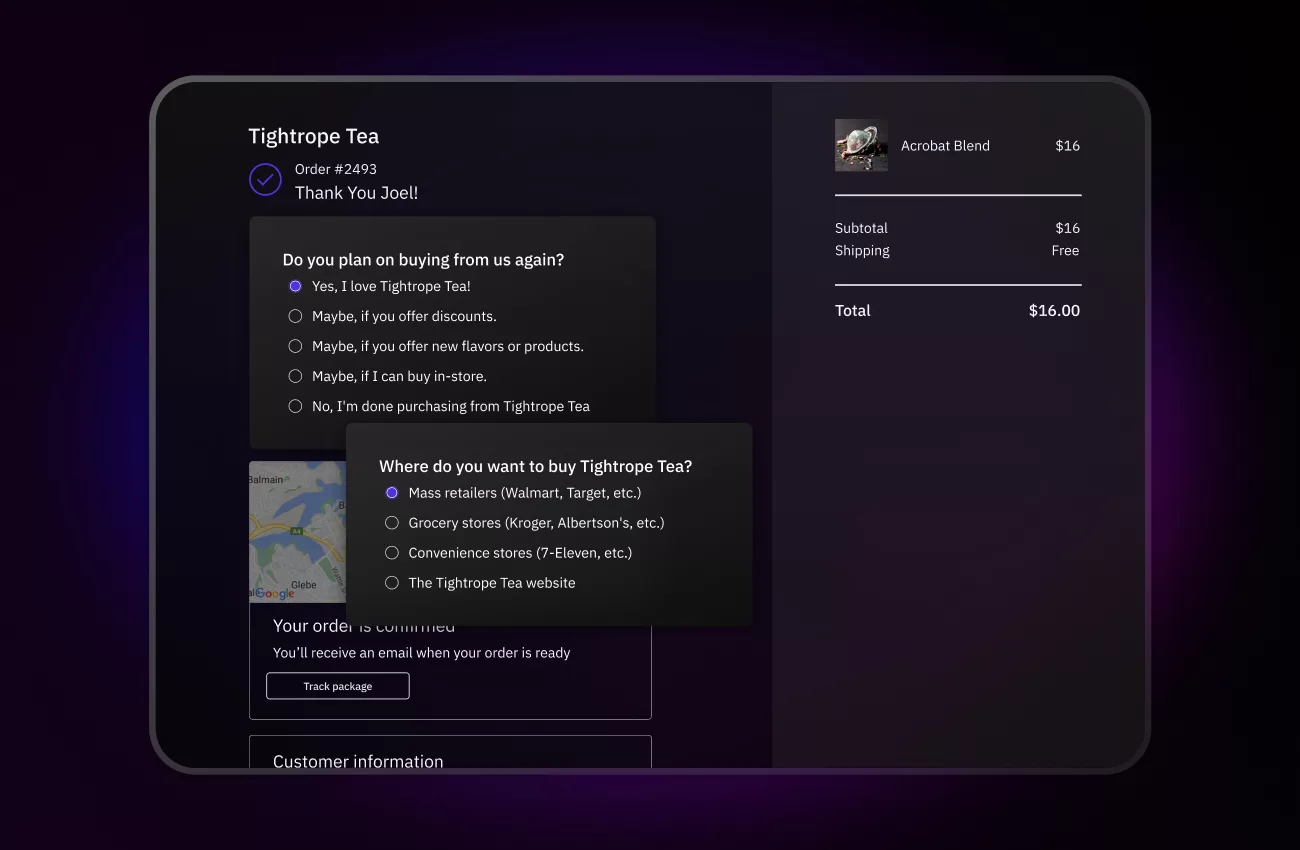
Jessica Cervellon, Head of Customer Experience at Feastables, encapsulates this philosophy: “Listen to your customers. They are offering you information. If a customer — whether new or repeat — is purchasing from you, they are invested in your brand. They can offer you so much information like what’s going to push you for the future and how you can make more conversions.”
Leveraging the insights from zero-party data, brands can personalize the customer journey at multiple touchpoints:
Enhancing the customer experience is central to brand loyalty and growth. With the right tools and strategies, brands can create experiences that not only retain customers, but also turn them into brand advocates.
As Jonathan Davies, Director of LinedUp, says, “Our D2C clients understand that loyal customers quickly become powerful brand advocates, who then go on to refer friends and family. Word-of-mouth marketing, generated by loyal brand advocacy, is an extremely powerful driver of new business. We trust Okendo to deliver a loyalty program that facilitates this organic growth, alongside their extensive suite of other customer retention tools.”
In the fast-paced world of ecommerce, customer feedback serves as the north star, directing brands towards improved online experiences. But while collecting feedback is undeniably crucial, the ease with which online shoppers provide it can make or break the effectiveness of your feedback strategy.
Ecommerce thrives on seamless user experiences, and this principle applies to feedback collection too. The process should be intuitive and unobtrusive, ensuring customers are more inclined to share their insights without feeling burdened.
Brief, to the point, and strategically timed, micro surveys capture real-time feedback during various stages of the online shopping journey. Their succinct nature not only boosts participation rates, but also offers laser-focused insights on specific touchpoints, be it product selection, checkout, or post-purchase experiences.
Net Promoter Scores (NPS) provide merchants a quick pulse-check on customer satisfaction, serving as a great tool to measure customer loyalty. However, it’s the lower scores that often offer the most actionable insights. Engaging promptly with online shoppers who submit a low NPS can shed light on pain points within the online store, potentially leading to tangible improvements in the user experience.
For Feastables, while driving repeat purchases and identifying loyal brand advocates is key, they also place immense value on understanding and nurturing customers who had less than stellar shopping experiences. By utilizing NPS surveys and Okendo’s conditional logic features, Feastables was able to pinpoint why dissatisfied customers are unhappy by asking pointed follow-up questions to uncover more insights behind the low score.
In the digital marketplace, where competition is just a click away, ecommerce brands must constantly seek innovative strategies to foster loyalty and drive organic growth. This is where referral programs become a strong tool not only for acquiring new customers, but for deepening relationships with existing ones.
At the heart of a successful referral program lies the principle of reciprocity. When customers are incentivized to refer to your brand, it’s not just about the tangible rewards they receive, but also the feeling of importance and recognition. This gesture strengthens their connection to your brand, reinforcing trust and building customer loyalty. A well-structured referral program effectively communicates: “We value you, and we value those you bring into our community.”
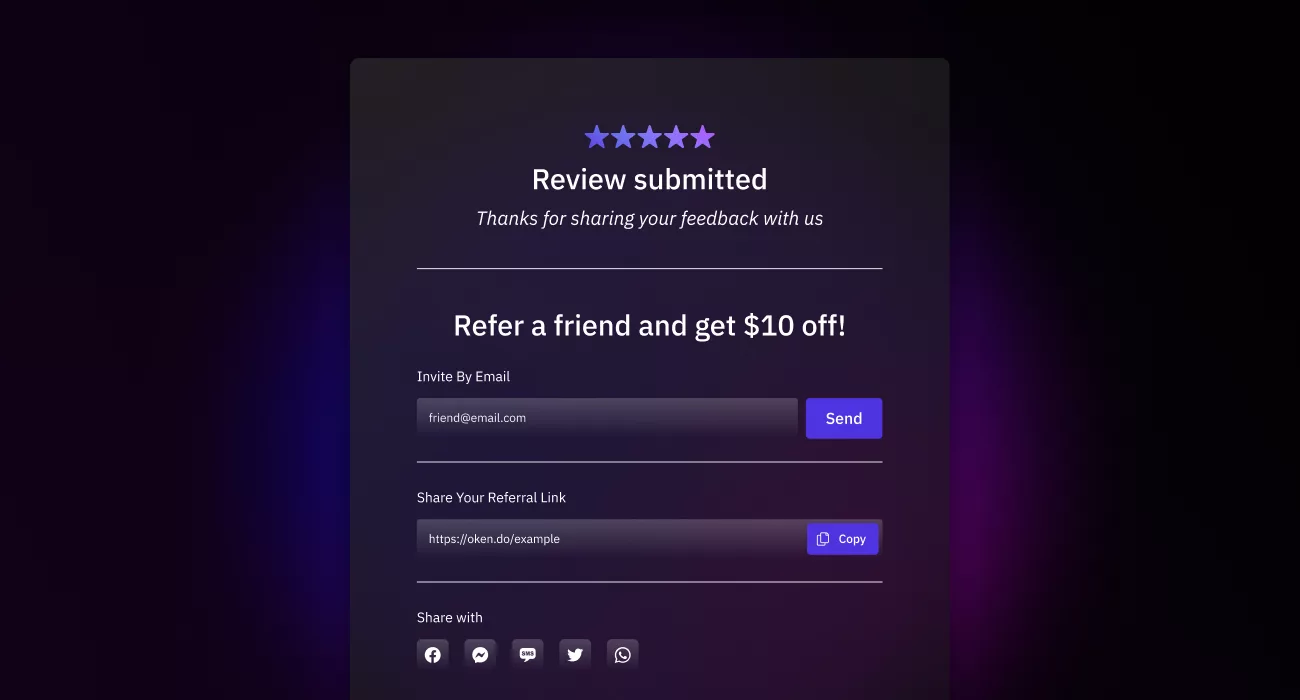
The ripple effects of a referral program extend beyond just acquiring new customers. The very act of referring can re-engage existing customers, prompting them to revisit and often leading to repeat purchases. It’s a win-win: they get rewards for referring, and you benefit from both the referral and the renewed patronage.
Beyond the immediate benefits, there’s substantial long-term value in acquiring referred customers. Data consistently shows that referred customers often exhibit higher loyalty and engagement metrics. To underscore this point, consider this: referred customers have a staggering 16% higher lifetime value compared to those who aren’t referred. These customers aren’t just valuable in terms of purchases, they’re likely to become brand advocates.
Building a customer referral program isn’t just an acquisition strategy for ecommerce brands, it’s a powerful driver of loyalty. By recognizing and rewarding customers for their advocacy, brands can deepen trust, drive repeat business, and ensure a steady stream of high-value customers who are primed for long-term engagement.
In the ecommerce universe, where customer retention is as vital as acquisition, a robust loyalty program can be the linchpin that ensures consistent engagement. More than just a rewards system, a strong loyalty program provides a structured approach to deepening relationships with your customers and fostering a sense of belonging.
By offering tangible rewards, loyalty programs encourage specific customer behaviors, but their true power lies in the emotional connection they help foster. Customers feel valued, recognized, and appreciated, leading to:
A dynamic loyalty program understands the multifaceted nature of customer engagement. For instance, while making a purchase might earn customers a certain number of points, other actions can be equally rewarding. Consider offering points for:
In a world with countless brand options, customer loyalty is the game-changer. Successful brands don’t just sell products, they deliver experiences and build relationships. As the digital marketplace evolves, especially in sectors like beauty and fashion, these six pillars guide the way. By adopting them, brands can attract, connect with, and retain customers, fostering loyalty in a changing landscape.
Interested in learning more about customer loyalty? Read more in our customer loyalty guide.
Related articles
Ready to learn more?